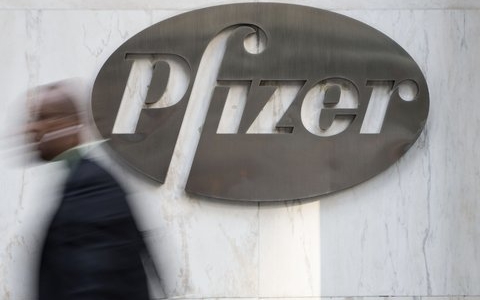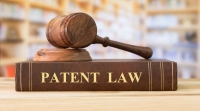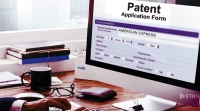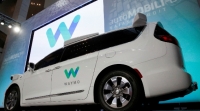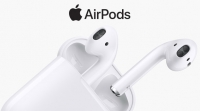Pfizer is making a $15.2 billion bet on the drug industry’s new, more elite class of generics: costly, complex copies of already expensive biotech drugs.
In its offer on Thursday to buy Hospira for $90 a share, or $17 billion including debt, Pfizer is paying richly for what it believes will be a lucrative source of future revenue, drugs known as biosimilars.
“It’s where the growth is,” Dimitri Drone, a pharmaceutical consultant at PricewaterhouseCoopers, said of the emerging market for biosimilars. “It’s the land of opportunity.”
Biosimilars are generic drugs seeking to copy expensive and more complex drugs called biologics that until now have largely been immune from competition in the United States. Biologic drugs, which are made in living cells, cannot be precisely copied, which is why the new class of drugs are referred to as biosimilars and not merely generics.

Yet for all their promise, questions remain about the durability of the market for these specialty drugs.
Although biosimilars have been available elsewhere for years, including in Europe, where Hospira sells some products, they have not arrived on the market in the United States because the Food and Drug Administration has not approved any.
That is most likely about to change — last month, an advisory panel to the F.D.A. recommended approval of a close copy of the Amgen drug Neupogen, which is used in cancer treatment. If the agency approves the biosimilar, which is made by Sandoz, a unit of the Swiss pharmaceutical company Novartis, it could pave the way for more such drugs to enter the marketplace.
Several large drug companies — including Amgen, Teva and Hospira — have been developing biosimilars in anticipation of their approval in the United States.
The price for brand-name biologic drugs can be very high: One common drug, the rheumatoid arthritis drug Humira, can cost $5,000 a month. A typical allotment of Neupogen, the drug used in cancer treatment, can cost more than $3,000, according to the website GoodRx, which tracks drug prices.
Pfizer is wading deeper into a market that is seen as potentially lucrative because biosimilars, while offered at a discount from the expensive drugs they are mimicking, are expected to sell for higher prices than their traditional generic cousins. Pfizer said on Thursday it estimated that the market for biosimilars would reach $20 billion by 2020.
But for its enlarged market position in this nascent field, Pfizer is paying a steep price, and some analysts question whether the drug lines will fit into Pfizer’s business model. Hospira’s share price is at a record high, having risen nearly 50 percent in the last year before the deal was announced. Pfizer is paying a 39 percent premium on top of that.
Judged by one common measure, the price is especially high. Pfizer is paying just over 20 times earnings before interest, taxes depreciation and amortization for Hospira.
The deal for Hospira comes at a critical time for Pfizer. Some of Pfizer’s best-selling drugs lose patent protection soon, and the company will have to make up for lost sales.
This is also the company’s first big move since last year’s failed attempt to buy AstraZeneca for more than $100 billion. An acquisition of the British drug maker would have been the largest ever so-called inversion, a deal that would have allowed Pfizer to reincorporate abroad to save on taxes.
Now, Pfizer is looking toward Hospira to increase its earnings per share. Pfizer stock was up nearly 3 percent on Thursday on the news of the deal. Pfizer said the deal should result in $800 million in annual cost savings by 2018, and is expected to close in the second half of this year.
“The proposed acquisition of Hospira demonstrates our commitment to prudently deploy capital to create shareholder value,” Ian Read, Pfizer’s chief executive, said in a statement.
But Ronny Gal, an analyst who focuses on specialty pharmaceuticals at Sanford C. Bernstein & Company, cast doubts on Pfizer’s projections for potential cost savings and titled his research note on the deal, “They Paid What?”
The deal may in the end pave the way to an eventual breakup of Pfizer. For years, analysts and investors have questioned whether Pfizer, one of America’s largest and most well-known pharmaceutical companies, would be better off split in two.
In a conference call last year, Mr. Read responded to a question about splitting up the company by acknowledging that there were already, in effect, two Pfizers.
“We are managing the business in two segments, broadly speaking,” Mr. Read said while announcing second-quarter earnings in July 2014. “One being innovative and the other being established.”
And on Thursday, Frank D’Amelio, Pfizer’s chief financial officer, went further.
“We do not believe this transaction will have an impact on the timing of a potential split should we choose to do one,” he said in a call with investors.
Mr. Read has so far not said there is any formal plan to break up Pfizer, and a person briefed on the company’s thinking said a split was unlikely this year.
But if it does eventually cleave itself in two, Pfizer would follow the path forged by Abbott. In 2013, Abbott spun off AbbVie into a separately traded company. AbbVie is now the larger of the two. Before that split happened, Abbott spun off Hospira in 2004.
Yet while company executives hailed the potential of their combined portfolios, Mr. Gal questioned whether Hospira’s biosimilars program was a good fit with Pfizer, which is also developing such drugs.
Hospira has four of its own biosimilar drugs and six that it acquired from a company called Celltrion. The four that Hospira developed on its own are complements to Pfizer, Mr. Gal said. But those acquired from Celltrion are similar to drugs already under development by Pfizer. Mr. Gal said it was likely regulators would call on Pfizer to sell off similar drugs to win antitrust approval.
Furthermore, Mr. Gal cautioned that prices for biosimilars could fall sharply. “Everybody’s talking about the prices going down 20 percent, but the question is, Why wouldn’t the prices go down 75 percent?” he asked.
With the deal, Pfizer is also buying a company that has had issues with its safety record. In recent years, Hospira was forced to invest hundreds of millions of dollars to upgrade its manufacturing plants after facing a series of quality lapses that led to product recalls and warning letters from the F.D.A.
The company’s manufacturing problems — along with other lapses discovered at competing companies — contributed significantly to a nationwide shortage of injectable drugs that persists to this day. On Thursday, Pfizer officials said they had closely scrutinized Hospira’s plants and were confident that the company had addressed the problems.
Erin Fox, a drug-shortage expert at the University of Utah, said she would be watching closely to see if Pfizer decides to discontinue any of Hospira’s less profitable — but medically necessary — products. While Pfizer has in the past tried to alleviate shortages by stepping up the manufacture of some products, she said, previous consolidation in the industry has led to shortages of vital medicines.
“Drug manufacturing is a business, and they’re going to take a close look, and products very well may be discontinued for business reasons,” she said. “That, to me, is a worry point.”
Source: nytimes.com

